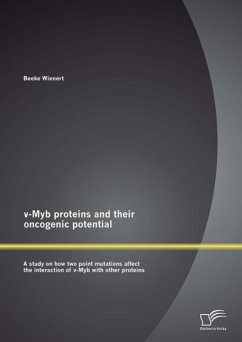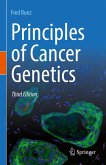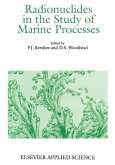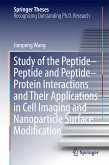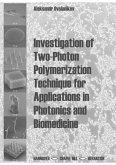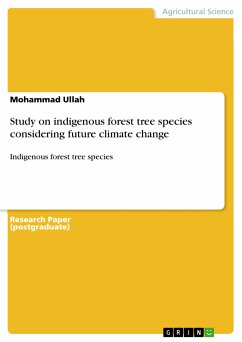The oncogene v-myb of the retroviruses AMV (avian myeloblastosis virus) and E26 (avian leukaemia virus) encodes a transcription factor (v-Myb) which is a truncated homolog of its cellular progenitor c-Myb. c-Myb plays an essential role in the development of haematopoietic cells and is known to be a regulator for many target genes. v-Myb AMV is responsible for the transformation of myelomonocytic cells and for arresting them in an immature stage, presumably because of a deregulation of the expression of specific target genes. In addition to the truncation of the coding region, a number of amino acid substitutions are responsible for the high oncogenicity of v-Myb AMV. Due to the amino acid substitutions, v-Myb AMV and v-Myb E26 differ in their target gene spectrum. The chicken mim-1 gene is activated by v-Myb E26 and c-Myb but not by v-Myb AMV. The gene consists of two cis-regulatory regions, a Myb responsive promoter and a cell-specific Myb-inducible enhancer. Recently, it has been proven that two amino acid substitutions in a hydrophobic patch in the transactivation domain of v-Myb AMV are sufficient to disrupt its ability to stimulate the enhancer. This work focuses on the consequences of these amino acid substitutions by investigating protein-protein interactions of the hydrophobic region of v-Myb AMV in comparison to v Myb E26. Previous experiments identified GRP78 as an interaction partner of v Myb. In this study, a cytosolic variant of GRP78, GRP78va, was confirmed to interact with both v-Myb proteins. It was shown that its interaction site is limited to a very small region of v-Myb preceding the hydrophobic patch. Additionally, it was shown that GRP78va associated with all other members of the Myb-family and also with C/EBPß and HIPK2, suggesting a non-sequence-specific binding of GRP78va. Furthermore, reporter gene experiments demonstrated a repressing effect of GRP78va on the transactivation potential of v-Myb E26. In addition, GST pull down assays and co-immunoprecipitation experiments were used to precipitate endogenous proteins that could represent potential interaction partners of v-Myb. SDS-PAGE analysis revealed candidate bands, but mass spectrometry analysis failed to identify any proteins relevant for interaction with v Myb. Two other proteins were tested for their interaction with the hydrophobic patch of v-Myb. Co-immunoprecipitation experiments confirmed that C/EBPß interacts with the hydrophobic region of v-Myb and that the amino acid substitutions seem to affect the interaction in a negative way. Furthermore, PRMT4 was identified as an interaction partner of v-Myb. Mapping experiments showed the interaction to be mediated by the hydrophobic region. The point mutations in v-Myb AMV appear to positively influence the affinity for PRMT4. The fact that a SUMO binding motif is located in the same region might suggest a potential involvement of SUMO in the interaction of PRMT4 and v-Myb.
Dieser Download kann aus rechtlichen Gründen nur mit Rechnungsadresse in A, B, BG, CY, CZ, D, DK, EW, E, FIN, F, GR, HR, H, IRL, I, LT, L, LR, M, NL, PL, P, R, S, SLO, SK ausgeliefert werden.

